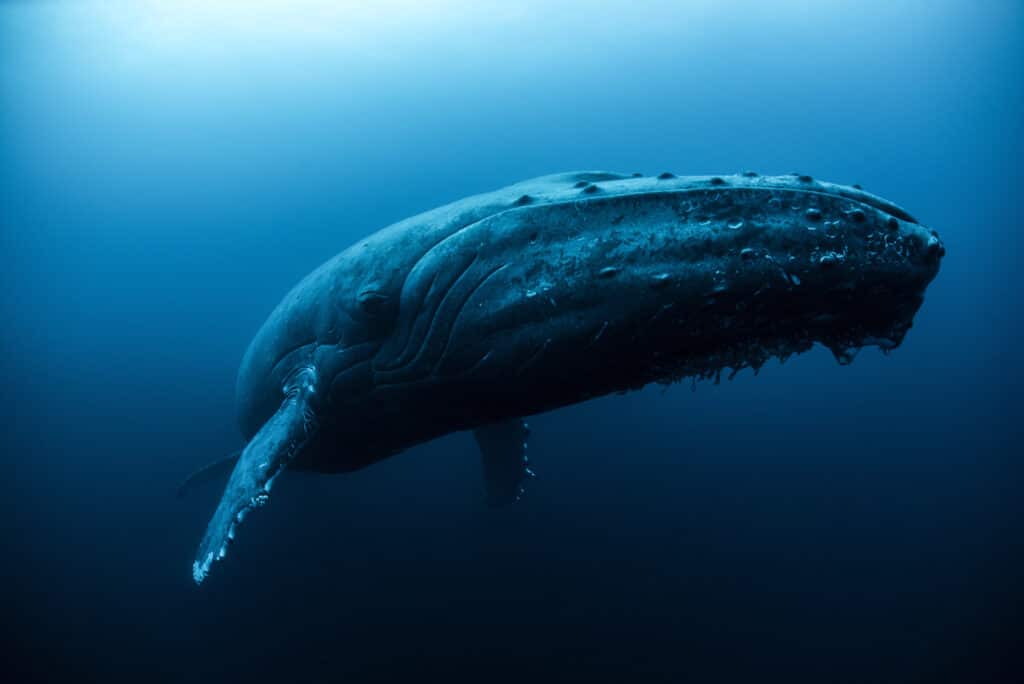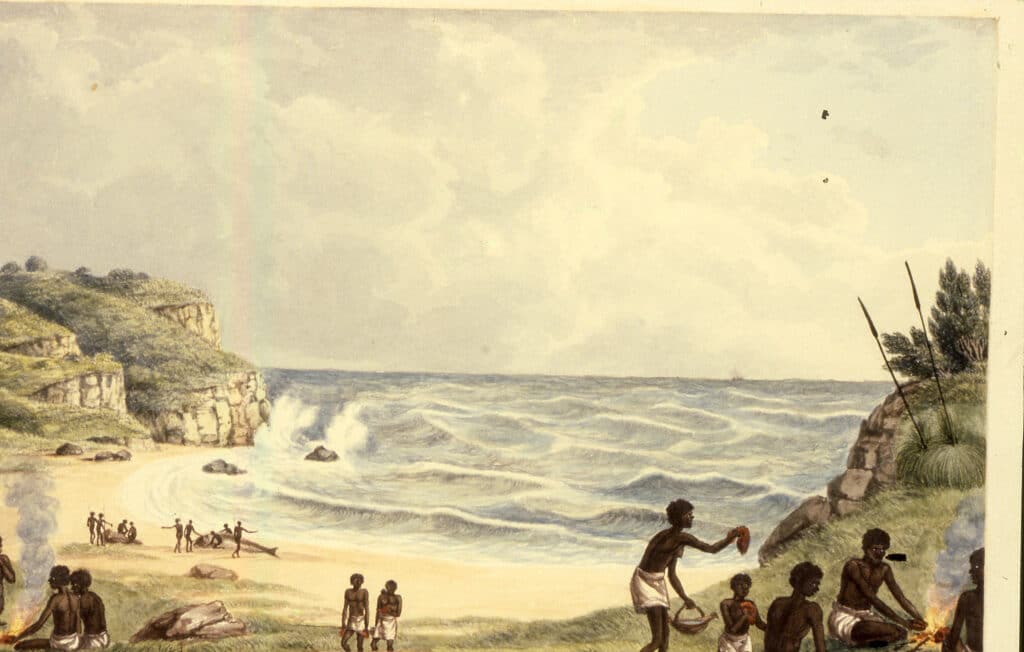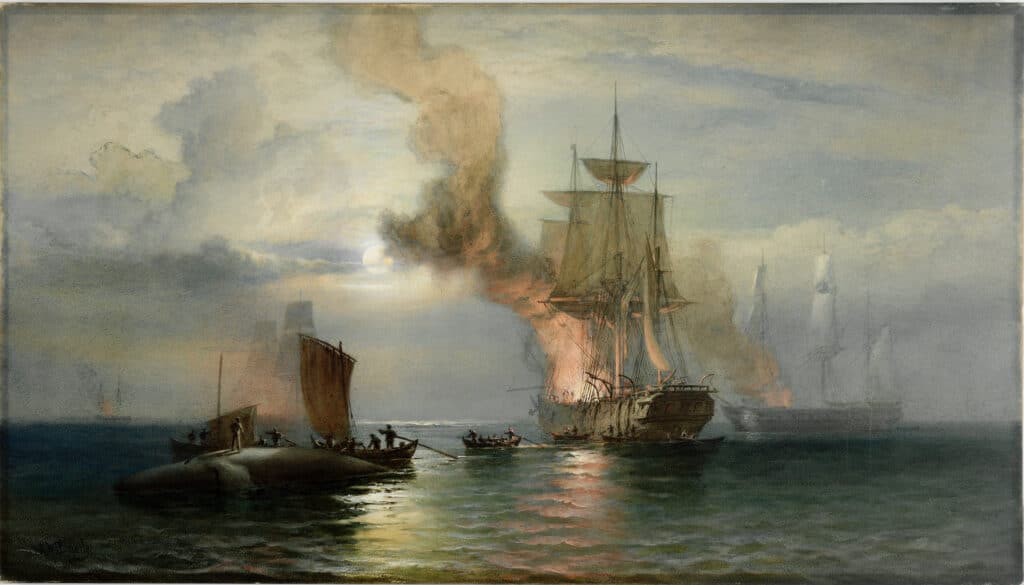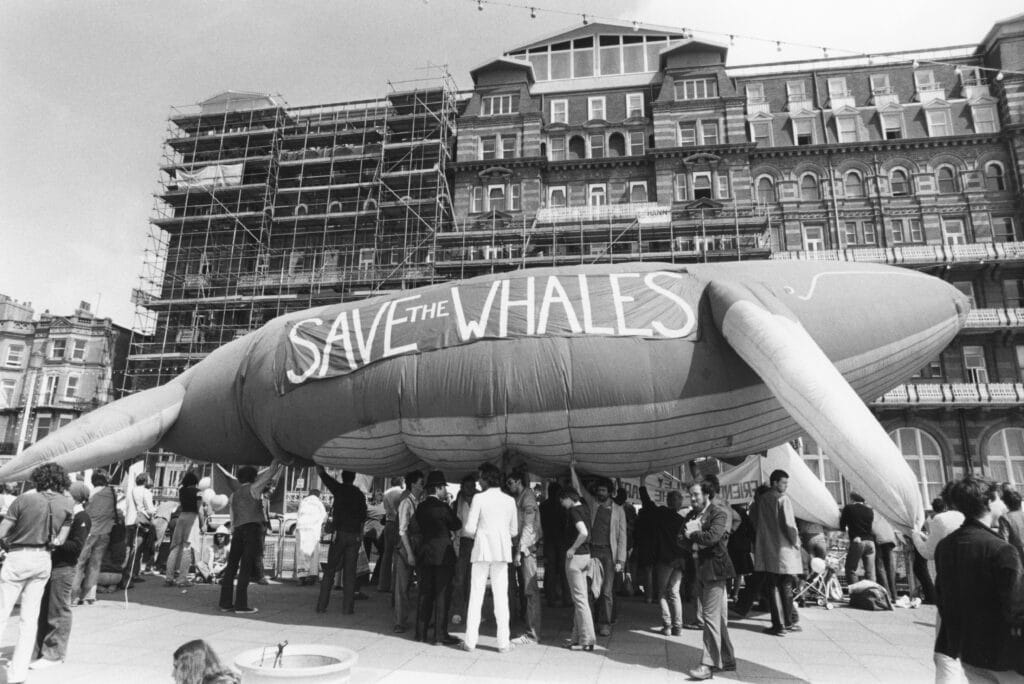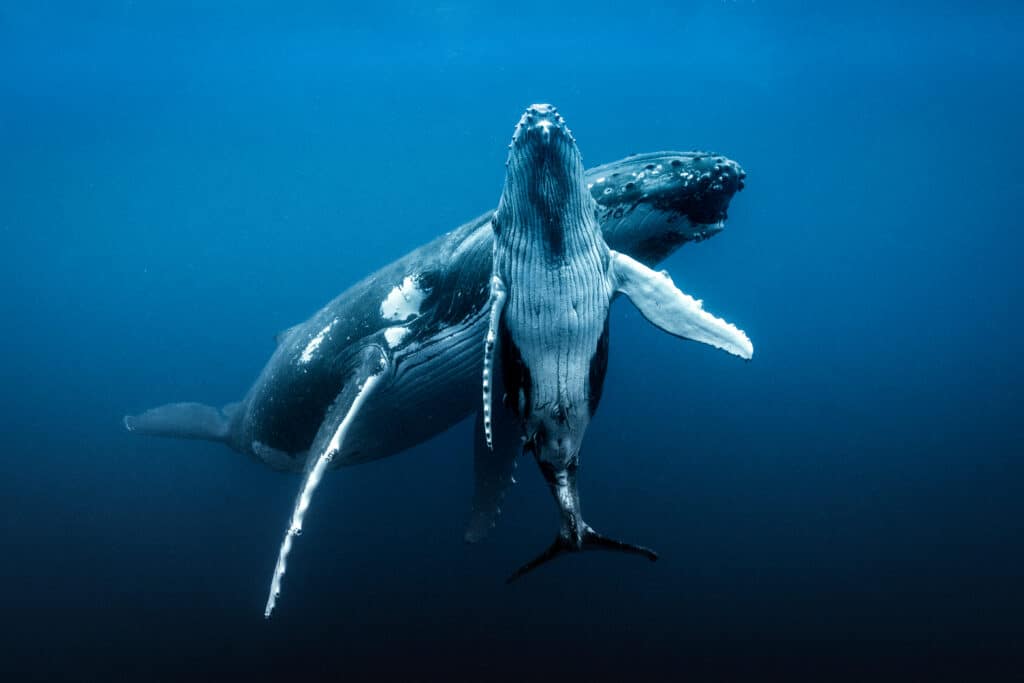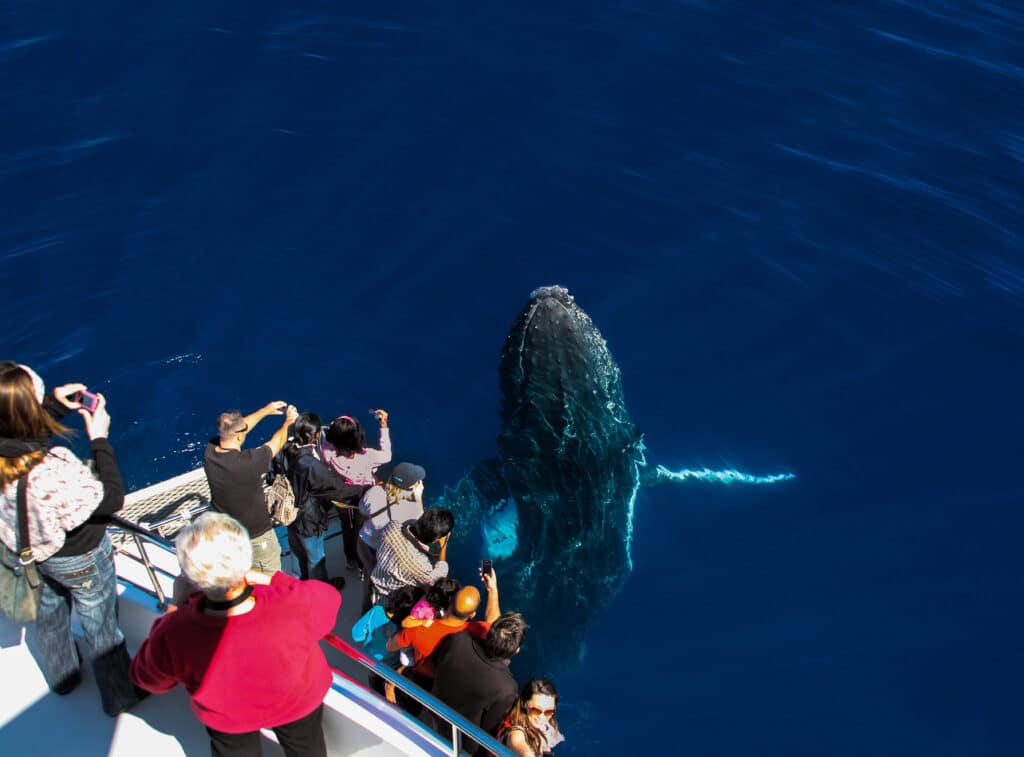Humpbacks in History
Humpback whales have complex relationships, communicate with each other in regional dialects, and even pass on cultural traditions — much like human societies.
15 Million Years Ago
Ancient Origins
Modern whales have been swimming in the world’s oceans for over 15 million years. Long before the arrival of humans, whales were a diverse and widespread group of marine mammals. The first modern whales measured just 5 to 9 metres in length. They only reached the size they are today following the formation of Earth’s polar ice caps around 4.5 million years ago.
Humpback whale populations originated in the southern hemisphere around 880,000 years ago and colonised the northern hemisphere 200,000–50,000 years ago. On the east coast of Australia, humpback whales were once abundant. Their population size was thought to be between 20,000 and 30,000 individuals. But the actual number may have been much higher.
A First Nations community preparing a meal from a beached whale carcass off the coast of New South Wales by Joseph Lycett, 1817. National Library of Australia.
63,000 Years Ago
Cultural Connections
For tens of thousands of years, many coastal First Nations groups across Australia shared a deep spiritual connection with humpback whales, considering them totemic animals and respected custodians of the sea. This relationship is evidenced through rock engravings estimated to be over 1,000 years old, as well as contemporary storytelling.
There is no record of indigenous hunting of whales in Australia. However, stranded whales were considered a valuable food and economic resource. The blubber was used to varnish spears, boomerangs and tools, and the bones were crafted into utensils, weapons, and even shelters. This use reflects First Nations people’s resourcefulness and sustainable approach to the environment.
South Sea Whalers boiling blubber with smaller boats preparing to bring a whale alongside for processing by Oswald W Brierly, 1876. State Library of New South Wales
1791
Blood in the Water
When European settlers arrived in Australia, the international whaling industry was expanding rapidly to keep up with the demand for whale oil. The whaling ship Britannia, which brought convicts to Sydney as part of the Third Fleet, was the first vessel to harpoon a whale off the New South Wales coast in 1791, marking Australia’s introduction to commercial whaling.
Whaling became Australia’s first primary industry, with hundreds of small ships and thousands of men involved in the trade. The industry helped the fledgling colony survive, as the whaling ships brought much-needed food and supplies to the colonists. By the 1820s, whaling had become as financially important as pastoralism, indicating its significant role in the Australian economy.
A whaler sitting inside a harvested whale’s mouth at a whaling station in South Georgia, 1932. Liborio Justo/Getty Images.
1962
Population Collapse
The industrialisation of whaling in the 20th century had devastating consequences. The introduction of explosive harpoon guns and steam-driven boats led to the over-exploitation of many species, including the near-extinction of humpback whales. Australian whaling stations had strict catch limits, but some nations took every whale they could find.
By the mid-20th century, only a few hundred humpback whales remained on the east coast of Australia. Globally, commercial harvesting caused the loss of nearly 3 million whales, making it the largest cull of any animal in human history in terms of total biomass. The future looked bleak for these majestic creatures, and scientists feared they may never recover.
Anti-whaling demonstration during the 32nd international whaling conference in Brighton, England, 1980. Jacob SUTTON/Gamma-Rapho
1967
Voices for Change
The discovery of humpback whale song in 1967 by US Navy Officer and marine mammal researcher Roger Payne marked a turning point in public awareness of the intelligence and complex social lives of whales. These hauntingly beautiful sounds, which can travel thousands of kilometres, captured the public imagination.
The recordings were broadcast around the world, rallying public support for saving humpback whales and other species. This increased awareness ignited the first global eco-campaign, the Save the Whales movement, in 1975. Showing the public pictures and videos of whales being killed sparked an international outcry and a sea-change in popular opinion against whaling.
A mother humpback whale and her young calf rest in protected waters.
1978
Turning the Tide
The International Whaling Commission introduced a global ban on the commercial whaling of humpback whales in 1978 and extended it to all whale species in 1986. While some pro-whaling countries resisted and continue to hunt whales even today, it marked a significant turning point, allowing their decimated populations to gradually recover.
The Australian Whale Sanctuary was established in 1999. This sanctuary prohibits the killing, injury, or disturbance of any whale, dolphin or porpoise, with severe penalties for those convicted of such offences. At the same time, Australia started working towards international protection and is considered a global leader in the ongoing fight against commercial whaling.
Whale watchers enjoy a close encounter with a humpback whale on the Gold Coast, Australia. Sea World Whale Watch.
Today
A New Era
Since the end of commercial whaling, the eastern Australian humpback whale population has steadily increased by approximately 7 per cent per year. This trend created a unique opportunity, and in 1981, entrepreneurs launched the first whale watching tours, providing people with a chance to witness these majestic creatures in their natural habitat.
These tours were instrumental in fueling the growth of ecotourism, which generates billions of dollars in revenue each year and raises public awareness about conservation. Today, more than 40,000 humpback whales migrate along the east coast of Australia, representing a remarkable recovery from the brink of extinction and providing a thrilling sight for visitors and locals alike.
INSPIRATIONAL STORY OF CONSERVATION
The humpback whale’s story is one of the defining conservation successes of the last hundred years. Thanks to the dedication of scientists, environmentalists, governments and people like you, these gentle giants have made a remarkable recovery. Not all whale species have been so lucky. The songs of the humpback whale continue to be a testament to the power of conservation and remind us of the importance of safeguarding our oceans and their inhabitants. By continuing to protect them, we can ensure that all whales will continue to thrive for generations to come.

